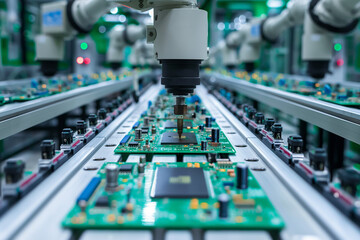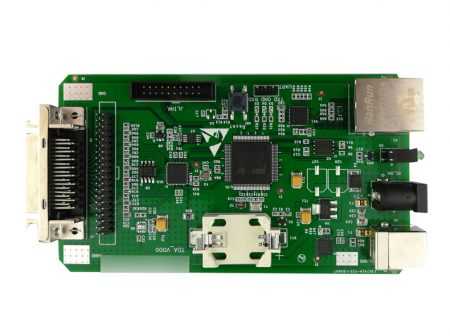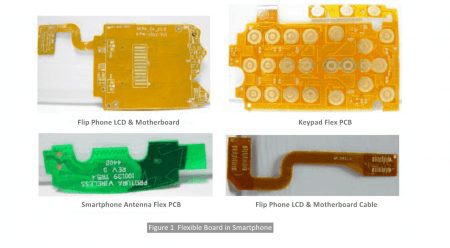- +86-755-23012705
- Building 3, Jinfeng Industrial Park, Fuyong Street, Baoan District, Shenzhen ,China
- [email protected]
In the world of electronics manufacturing, precision is paramount. As devices become smaller, more complex, and demand faster performance, the need for high-precision PCB assembly has never been greater. Surface Mount Technology (SMT) has emerged as a game-changer in this domain, enabling manufacturers to meet the increasing demands for smaller, more powerful, and reliable electronic devices. From smartphones to automotive electronics and medical devices, SMT plays a critical role in ensuring that PCBs are assembled with the highest levels of precision and efficiency.
In this blog, we’ll explore how SMT technology works, its advantages, and why it has become a key enabler in achieving high precision in PCB assembly.
Surface Mount Technology (SMT) is a method of assembling electronic components directly onto the surface of a PCB rather than inserting them into drilled holes (as is the case with Through-Hole Technology or THT). SMT components are typically smaller and more compact than their through-hole counterparts, making them ideal for modern electronic devices where space is limited.
Solder Paste Application: The first step in SMT is applying a layer of solder paste onto the PCB pads using a stencil. The solder paste is a mixture of fine metal particles suspended in flux, which will later be used to secure the components to the PCB.
Pick-and-Place: Using automated machines, components are carefully picked from reels or trays and placed on the solder paste-covered pads of the PCB. This step is highly precise, as it ensures that each component is accurately positioned on the board.
Reflow Soldering: After the components are placed, the PCB is passed through a reflow oven, where the solder paste is heated to its melting point, forming solid solder joints between the components and the PCB. The process is closely controlled to ensure the right temperature profile is maintained for optimal soldering.
Inspection and Testing: Once the assembly is complete, the board undergoes rigorous inspection using techniques like Automated Optical Inspection (AOI) or X-ray inspection to check for any defects, misplacements, or poor solder joints.

SMT offers a range of advantages that directly contribute to achieving high precision in PCB assembly. Let’s look at some of the key benefits:
One of the primary advantages of SMT is its ability to support high component density on a PCB. Because SMT components are smaller and have no leads that need to be inserted into holes, manufacturers can place components more closely together, allowing for more functionality in a smaller space. This is crucial for modern electronics, where the demand for smaller devices with higher performance is constant. For example, smartphones and wearables need to pack a large number of components, such as processors, memory chips, and sensors, into a compact form factor. SMT makes this possible without compromising on performance or reliability.
SMT is inherently more precise than traditional THT methods. The automated nature of SMT ensures that components are placed accurately on the PCB with very little human intervention. Pick-and-place machines can place thousands of components per hour with a high degree of accuracy, often down to a fraction of a millimeter. This precision is particularly important in applications that require fine-pitch components (e.g., QFNs, BGAs) or highly complex circuit designs.
The high precision of SMT also contributes to better signal integrity in high-speed circuits, as shorter and more direct traces between components can be achieved. This is essential for industries such as telecommunications and computing, where high-frequency signals need to travel with minimal delay or interference.
While the initial setup costs for SMT equipment may be higher than THT, the overall cost of production tends to be more economical in high-volume manufacturing. SMT enables faster production times due to its automation, which reduces labor costs and cycle times. Additionally, because SMT components are smaller and lighter, they generally cost less to manufacture, and fewer resources are required for assembly.
The ability to use smaller components means that manufacturers can optimize the use of PCB space, leading to smaller, more compact designs that use less material overall. For products that require high-performance but compact designs—such as IoT devices, medical devices, and automotive electronics—this can translate into substantial cost savings.
SMT reduces the likelihood of manufacturing defects due to its highly automated and controlled process. With automated placement machines and reflow soldering ovens, human error is minimized, leading to more consistent quality and fewer defects such as soldering issues, misaligned components, or cold solder joints. This higher level of reliability is crucial for industries like aerospace, medical devices, and automotive electronics, where product failure can have serious consequences.
Moreover, the use of advanced inspection techniques like Automated Optical Inspection (AOI) further ensures that potential defects are identified early in the production process, allowing for immediate corrective action.
SMT technology is highly flexible and can be applied to a wide range of PCB designs, from simple single-sided boards to complex multi-layered boards. This flexibility is essential in industries where product designs frequently change or evolve. SMT also supports scalability, enabling manufacturers to efficiently transition from low-volume prototype runs to high-volume production. This is particularly important for industries like consumer electronics, where products must be prototyped, tested, and then rapidly scaled to meet market demands.

SMT technology has become indispensable in high-precision applications across various industries. Let’s look at some examples:
Smartphones, laptops, tablets, and wearables all require high-density assemblies with very precise placement of components. SMT is essential in enabling the miniaturization of these devices while maintaining high functionality. Tiny components such as capacitors, resistors, and integrated circuits must be placed with extreme precision to meet the performance standards of modern consumer devices.
In the automotive sector, driver assistance systems (ADAS), infotainment, and electric vehicle (EV) components require highly precise PCBs. SMT ensures that components such as sensors, cameras, and control units are accurately placed, ensuring the safety and performance of the vehicle’s electronic systems.
From pacemakers to diagnostic equipment, medical devices often operate in critical environments where precision and reliability are non-negotiable. SMT allows for compact designs that are not only precise but also durable enough to withstand the demands of medical applications, including high-frequency signals and minimal space constraints.
Aerospace and defense applications demand the highest levels of precision and reliability. SMT enables manufacturers to create smaller, lightweight, and high-performance PCBs that meet the rigorous standards of these industries. Whether for communication satellites, military radar systems, or avionics, SMT is essential for meeting the stringent requirements of aerospace and defense systems.

Surface Mount Technology (SMT) has revolutionized the world of PCB assembly by enabling higher precision, smaller form factors, and faster production times. As electronic devices become more complex and smaller, SMT technology continues to meet the challenges of modern manufacturing, ensuring that components are placed with unmatched accuracy. Whether in consumer electronics, automotive, medical devices, or aerospace, SMT is the cornerstone of high-precision PCB assembly, supporting the next generation of electronic innovation and performance.
Your Trusted Partner for PCB Success: XPCB Limited
Let XPCB Limited be your guide to PCB success. Our comprehensive PCB manufacturing, rapid prototyping, and turnkey PCBA services are designed to meet your needs with ease. Count on us to deliver reliable solutions that exceed your expectations. With XPCB Limited, your journey to PCB excellence starts here.






XPCB Limited is a premium PCB & PCBA manufacturer based in China.
We specialize in multilayer flexible circuits, rigid-flex PCB, HDI PCB, and Rogers PCB.
Quick-turn PCB prototyping is our specialty. Demanding project is our advantage.
Tel : +86-136-3163-3671
Fax : +86-755-2301 2705
Email : [email protected]
© 2024 - XPCB Limited All Right Reserve
